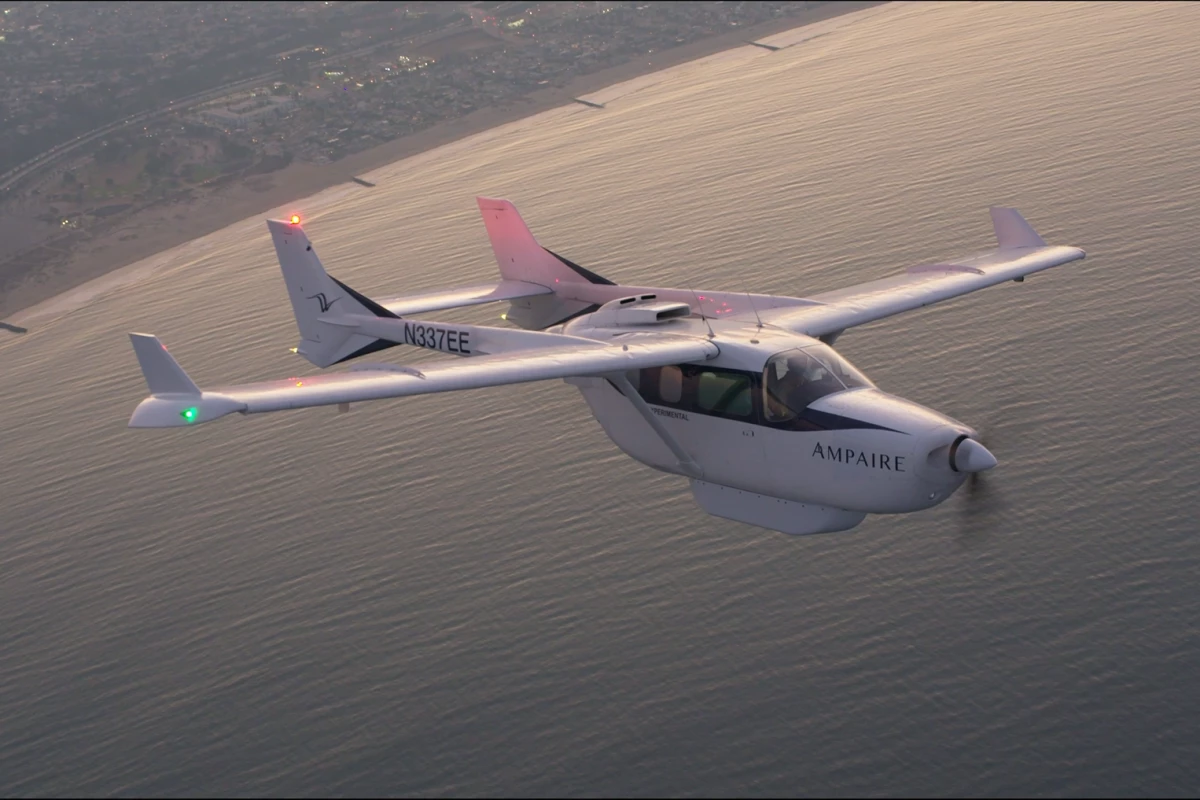Hybrids could have almost as much potential in the air as they do on the ground. Ampaire says the clever first-gen hybrid powertrain in its Electric Eel demonstrator cuts fuel consumption by 50-70%, and it's just logged a world record for endurance.
It's not as intuitive as it is with cars, where a hybrid's ability to harvest the braking energy in stop/start traffic makes a vast difference to the overall fuel consumption. Aircraft, of course, tend to run their engines more or less at a constant speed in cruise flight.
But Ampaire says that once you incorporate a hybrid powertrain, you can run a much smaller, more efficient and less powerful combustion engine, and simply switch the electric assist on when you need a thrust boost for takeoff, landing or fast acceleration. You can also run an aerial version of regenerative braking, provided your electric and ICE powertrains have separate propellers, to recover some energy as you slow down.

That's the case with the Electric Eel demonstrator plane, which runs a pusher prop as well as a traditional nose prop thanks to its Cessna 337 Skymaster twin-tail donor plane. The two powertrains are completely separate, operating in parallel.
In the next-gen Electric Eel, Ampaire says it plans to run a parallel-series layout, in which a combined hybrid engine system will power the rear prop, and also send power to the nose prop's electric motor. This will allow the aforementioned regenerative air braking, but it'll also allow the gasoline engine to charge the battery during flight. The current-gen Eel needs to be charged in the hangar between flights, but the next-gen plane will have much more flexibility to operate on fuel alone where no charging is available.
Still, the current plane is notching up some impressive achievements in its demonstration phase, burning vastly less fuel than the standard Cessna and reducing maintenance by an estimated 25-50% as well. And now it's set what the company believes is an endurance record for a hybrid aircraft, with a flight lasting "12 hours exactly," with more than two hours of reserve fuel and battery untouched.

The Eel flew 1,375 miles (2,213 km) during the flight – which was a simple circling exercise over Camarillo airport in California and probably not the most exciting undertaking in the world. But both the range and endurance handily beat the five hours and 745 miles (1,200 km) on the standard push/pull Cessna Skymaster's spec sheet.
Range and endurance remain massive challenges for fully electric aircraft – so perhaps, as the world moves to decarbonize every nook and cranny of industry, there's a place for hybrid propulsion to come in and act as a transitional step, vastly reducing fuel burn and emissions.
Enjoy watching the Eel fly over the gorgeous coast of Hawaii in the video below, from a few years back.
Source: Ampaire







